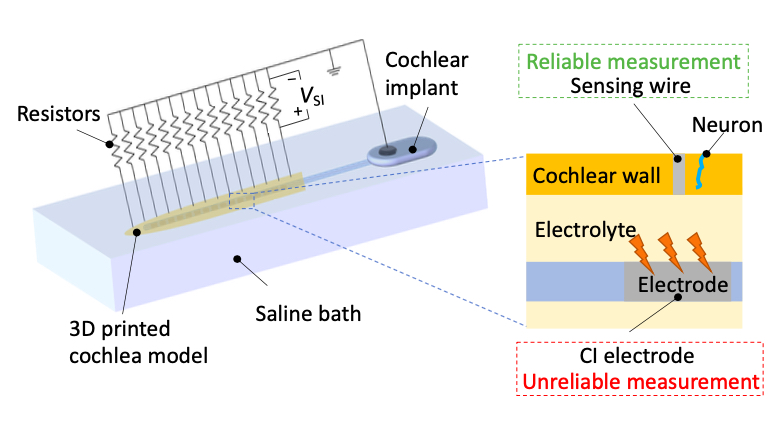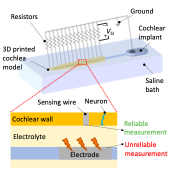
Cochlear implants (CIs) use electrical stimulation of the auditory nerve to restore the sensation of hearing to deaf people. Unfortunately, the stimulation current spreads extensively within the cochlea, resulting in “blurring” of the signal, and hearing that is far from normal. Current spread can be indirectly measured using the implant electrodes for both stimulating and sensing, but this provides incomplete information near the stimulating electrode due to electrode-electrolyte interface effects.
Here, a 3D-printed physical cochlea model with integrated sensing wires is presented, to evaluate the stimulation current spread of a CI in a cochlea. These wires are independent from the stimulating electrodes of a CI. Therefore, the measured current spread signals are not influenced by electrode-electrolyte interface potential near the CI, which is an important issue for conventional measurements that causes missing information in current spread distribution in a cochlea. We integrate resistors into the walls of the model to simulate current spread through the cochlear bony wall, and “tune” these resistances by calibration with an in-vivo electrical measurement from a cochlear implant patient. The calibration is validated with finite element modelling.
We then use this model to compare electrical current spread under different stimulation modes including monopolar, bipolar and tripolar configurations. Importantly, a trade-off is observed between stimulation amplitude and current focusing among different stimulation modes. By combining different stimulation modes and changing intracochlear current sinking configurations in the model, we explore this trade-off between stimulation amplitude and focusing further. These results will inform clinical strategies for use in delivering speech signals to cochlear implant patients.

